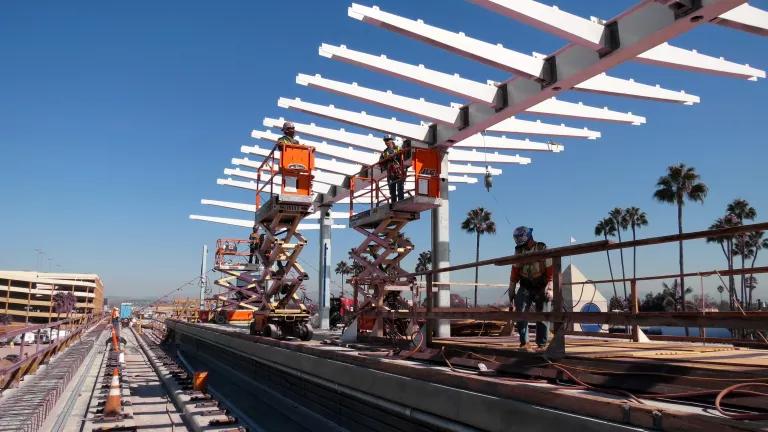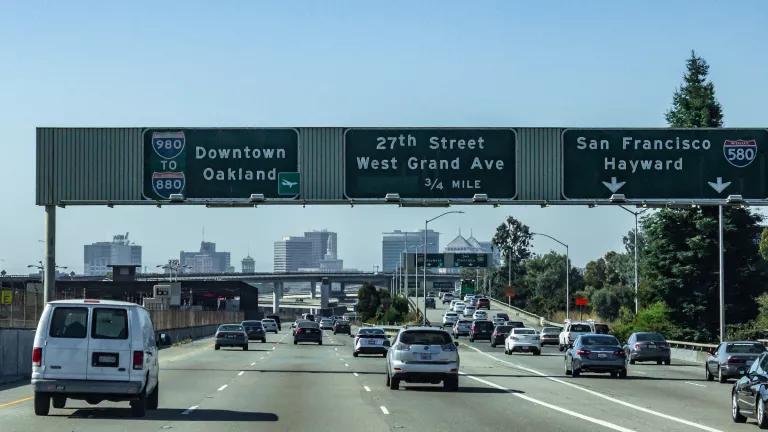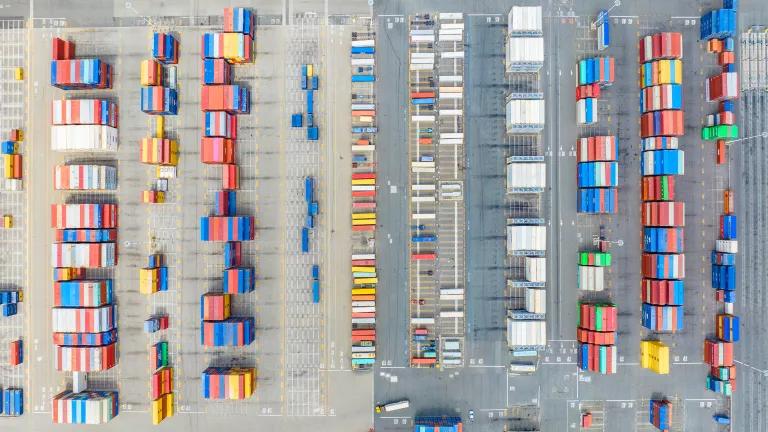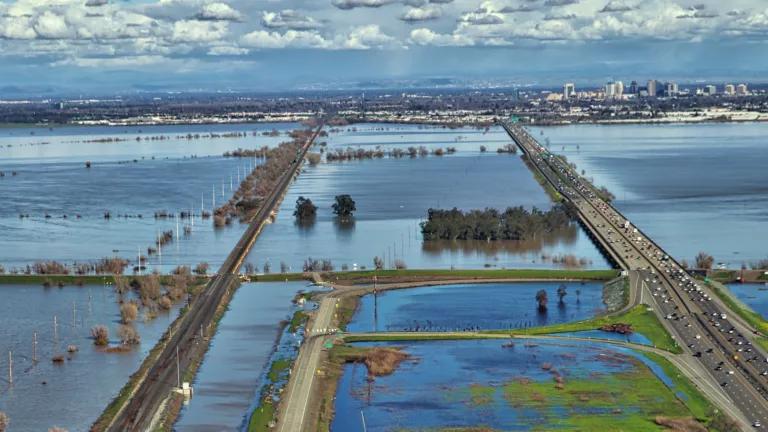Californians Deserve to Breathe Easy – Transportation Must Do Its Part
Transportation remains California's #1 source of climate pollution and a major source of lung-searing smog. The state must increase the pace of its efforts.

Projects like the Los Angeles Metro K line provide zero emissions transit that connects communities, cleans the air and creates economic opportunities. Photo via LA Metro.
In order to build a healthier California, we need our policies to work for everyone. Today, that’s not the case. Black, Latino, Indigenous, and Asian and Pacific Islander communities are disproportionately impacted by dangerous pollution from our transportation system. Californians are feeling the impacts of climate change firsthand, including wildfires, extreme weather, and a cycle of drought followed by intense rains and flooding.
Transportation must be part of the solution, but current efforts to clean up the transportation system are not moving at the speed and scale that are needed to combat the many problems facing Californians. Especially when curbing transportation emissions by investing in more mobility options could mean Californian's save over $2,700 per year, while enjoying cleaner air and a better quality of life for all.
To fully deliver on California’s promises for clean air and climate action, state leaders will need to go all-in on their efforts to create the transportation system of the future by prioritizing clean air investments like charging infrastructure for cars and trucks, new rail lines, public transportation, and biking and walking routes. Further, we must commit to rethinking investments in highway expansion, which have stubbornly resisted change, to ensure we’re not putting more truck-filled lanes of traffic next to communities already living with the impacts of freeways through their neighborhoods.
Governor Newsom recognized the need to shift transportation investments with his Executive Order, N-19-19 in 2019 that called for the California Action Plan for Transportation Infrastructure or “CAPTI.” He also recently announced plans to reconnect communities across the state. State agencies and some legislative leaders have also recognized the need to do more to reduce transportation emissions with the nation's most ambitious standards for clean cars, trucks and trains.
But the science of climate change is unrelenting, and California must continue to lead the way for other states and the world. Our health and climate depend on it. Clean air investments will reduce the impacts of lung-searing smog and fine particle pollution. The American Lung Association gave 30 California counties an “F” grade for high ozone days, and 41 counties an “F” for particle pollution in their 2023 State of the Air report card. California cities also occupy each of the top four worst rankings in both year-round particle pollution and ozone pollution.
The stakes for climate change couldn’t be higher. While California has been working to reduce climate emissions and air pollution for decades, and overall emissions in our state are down from 1990 levels, transportation emissions still make up too large a share of those emissions. California’s lead agency for clean air and climate action, the California Air Resources Board (CARB), made this clear in its newest greenhouse gas analysis for the state: the transportation sector generates 39% of California’s greenhouse gas emissions, the biggest source of climate pollution in the state.
Of that 39%, the vast majority is on-road transportation—cars, large freight trucks, and everything in-between, which account for 33% of the State’s total. CARB has also said that in addition to California’s internationally-leading zero-emission vehicle regulations, the state must grow investments in projects that reduce congestion, clean the air, and foster safer and healthier communities—investments in sidewalks, safe bike infrastructure, zero-emissions vehicle charging infrastructure, and robust bus and train service.
To put California on a healthy track, our state will need to go all-in on healthy, clean transportation investments that work for our communities and our climate.




